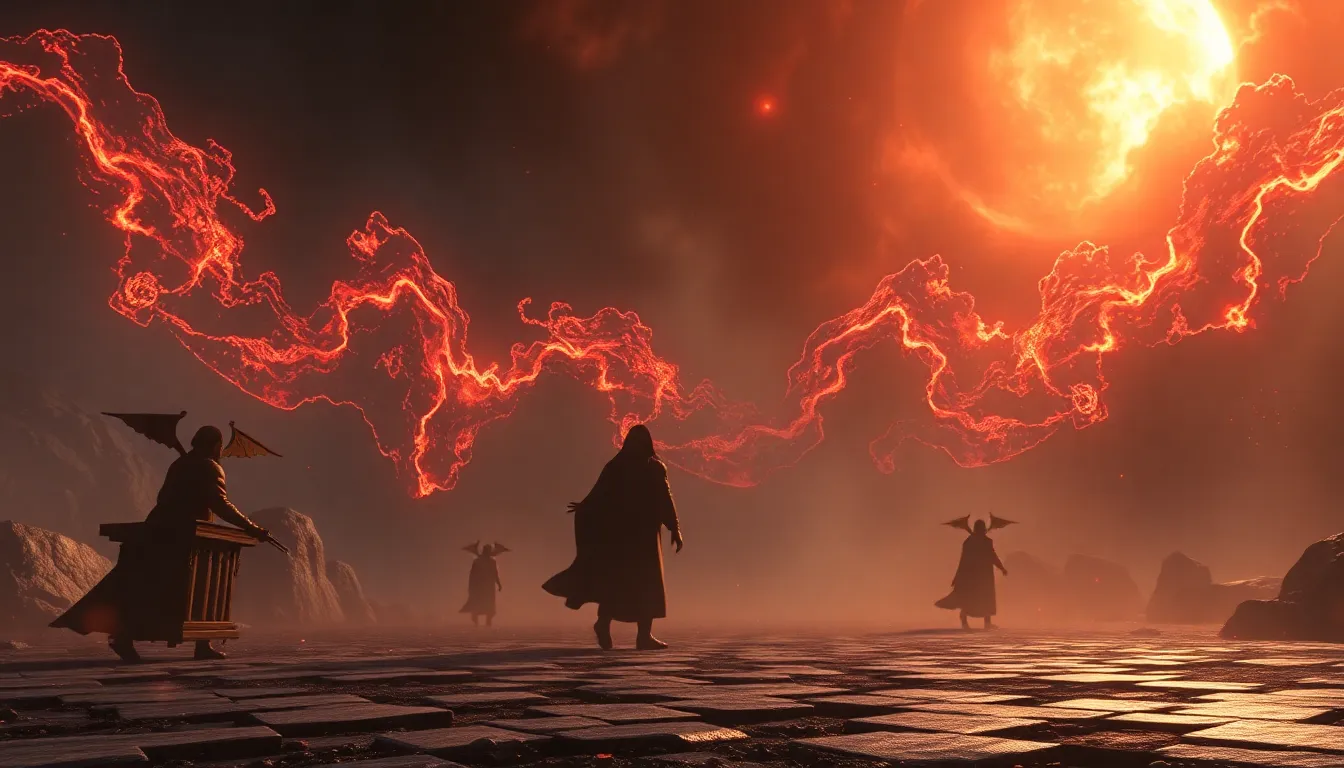The Quest for the Enchanted Object: Myths of Wonder
Introduction to Enchanted Objects
Enchanted objects have intrigued humanity for centuries, serving as powerful symbols in various mythologies around the globe. Defined as items imbued with magical properties or significant power, these objects often play pivotal roles in the narratives they inhabit. From ancient relics to mystical artifacts, enchanted objects reflect the hopes, fears, and aspirations of the cultures that created them.
The cultural significance of enchanted objects spans civilizations, from the legendary Excalibur of Arthurian legends to the mystical mirror of Chinese folklore. Each civilization has woven its beliefs, values, and desires into the fabric of these artifacts, making them not only fascinating story elements but also mirrors of human nature.
Historical Context of Enchanted Objects in Myths
Throughout history, enchanted objects have been central to many myths and legends. Ancient civilizations often attributed divine qualities to certain items, believing they were gifts from the gods or the result of supernatural forces.
- Greek Mythology: The golden fleece and Pandora’s box are prime examples of enchanted objects that embody both hope and despair.
- Norse Mythology: Mjölnir, Thor’s hammer, symbolizes protection and power, while the ring Draupnir represents wealth and abundance.
- Egyptian Mythology: The ankh and the Eye of Horus are powerful symbols of life and protection, often found in tombs as enchanted objects meant to aid the deceased in the afterlife.
The Symbolism of Enchanted Objects
Enchanted objects often carry deeper meanings that resonate with the human experience. They symbolize various themes, such as:
- Power: Many enchanted objects grant their wielders extraordinary abilities, representing the quest for power and control.
- Transformation: These objects often catalyze change, leading heroes on journeys of growth and self-discovery.
- The Human Experience: Enchanted objects frequently reflect human desires, fears, and the eternal struggle between good and evil.
Famous Enchanted Objects and Their Stories
Numerous enchanted objects have become iconic through their rich histories and the tales surrounding them:
- The Holy Grail: This legendary artifact represents a quest for divine fulfillment, often associated with purity and the search for spiritual enlightenment.
- Excalibur: The sword of destiny in Arthurian lore, Excalibur symbolizes rightful sovereignty and the burden of leadership.
- The Ring of Power: In J.R.R. Tolkien’s universe, the One Ring embodies corruption and temptation, illustrating the struggle between good and evil.
The Hero’s Journey and the Quest for Enchanted Objects
The hero’s journey is a common narrative framework that often involves the quest for enchanted objects. This archetype represents the path of growth and discovery that heroes undertake, frequently showcasing their trials and triumphs.
Notable figures who have sought enchanted objects include:
- King Arthur: His quest for Excalibur defines his destiny as a king.
- Perseus: Armed with enchanted items, he slays Medusa and saves Andromeda.
- Frodo Baggins: His journey to destroy the One Ring illustrates the burden of power and the importance of friendship.
Cultural Variations in the Concept of Enchantment
The concept of enchanted objects varies greatly between cultures, each offering unique interpretations and values:
- Eastern Cultures: Enchanted objects often appear in folklore, such as magical scrolls or talismans that grant protection and wisdom.
- Western Cultures: Myths often revolve around knights and quests, with enchanted swords and chalices playing central roles.
Folklore and fairy tales across cultures have shaped these narratives, illustrating the universal themes of adventure and moral lessons inherent in the quest for enchantment.
Psychological Interpretations of Enchanted Objects
The allure of enchanted objects can be understood through psychological lenses. They tap into fundamental human desires for power, control, and transcending the ordinary.
These myths impact human aspirations by:
- Inspiring individuals to seek greatness beyond their current circumstances.
- Encouraging introspection about one’s values and desires.
- Highlighting the consequences of ambition and the pursuit of power.
Modern Adaptations of Enchanted Object Myths
Contemporary literature and media continue to reinterpret ancient myths surrounding enchanted objects. From blockbuster films to best-selling novels, these stories resonate with modern audiences.
Examples include:
- Harry Potter series: The magic wand as an enchanted object symbolizes the potential within individuals.
- The Lord of the Rings films: The One Ring’s influence remains a powerful narrative about temptation.
- Video games: Titles like “The Legend of Zelda” feature enchanted items that drive quests and character growth.
The Enduring Legacy of Enchanted Objects in Popular Culture
Enchanted objects continue to captivate audiences, becoming staples in storytelling across various media. Their magical allure and the themes they represent resonate with both historical and contemporary contexts.
Recent works that feature enchanted objects include:
- Marvel Cinematic Universe: Artifacts like the Tesseract and the Eye of Agamotto play critical roles in the narrative.
- Fantasy literature: New authors draw on ancient myths to create enchanted objects that reflect modern dilemmas.
Conclusion: The Relevance of Enchanted Objects Today
The myths surrounding enchanted objects remain timeless, continuing to spark imagination and reflection. They offer lessons about ambition, morality, and the human experience, reminding us of the transformative power of storytelling.
As we navigate our own quests in life, the enchanted objects of myth can inspire us to seek our own sources of magic and meaning, illustrating the enduring nature of these narratives in our ever-evolving world.



